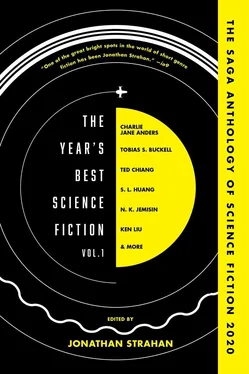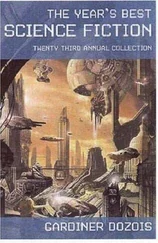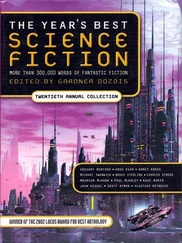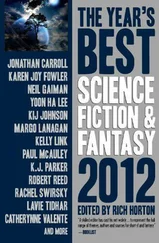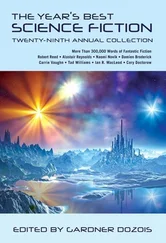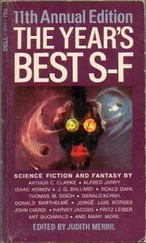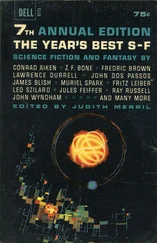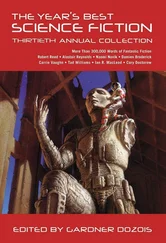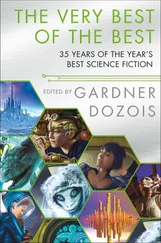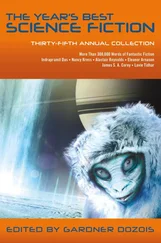It was a fairly good year for the SF magazine market, with a limited number of reported closures, and almost every magazine—print or digital—seeming to do well. We still don’t have any print magazines appearing on a monthly schedule, something we could rely on in the past, but that seems a small price to pay for a stable market. This might be the point where I should mention that most of the magazines established before 2000 were print magazines, and most established after 2010 were primarily digital, but by 2019 all of them have, to a greater or lesser degree, both a print and digital presence.
Twenty or more years ago, science fiction had the “big three” magazines: Asimov’s, Analog, and F&SF . Even though that nickname is no longer useful, with those three and Tor.com , Clarkesworld, Lightspeed , and Uncanny now making more of a “big seven,” it is good that all of these are still with us and, even if they may have trimmed their sails here and there, seem to be thriving in these digital times. F&SF reached its 70th year in 2019, publishing a special anniversary issue featuring work by Paolo Bacigalupi, Kelly Link, Michael Moorcock, and others. Charles Coleman Finlay’s fifth year at the magazine as editor was his best yet and saw him publishing outstanding fantasy and horror from G. V. Anderson, James Morrow, and Sam J. Miller, as well as strong SF from Lavie Tidhar, Elizabeth Bear, Rich Larson, and Michael Libling. The two Dell Magazines, Asimov’s Science Fiction and Analog Science Fiction and Fact , also had strong years. The less engineering focused of the two, Asimov’s , which has been published since 1977 and is edited by longtime editor Sheila Williams, featured excellent SF from Carrie Vaughn, Tegan Moore, Suzanne Palmer, Lawrence Watt-Evans, Greg Egan, Siobhan Carroll, Ray Nayler, and E. Lily Yu. In its 89th year of publication, Analog (formerly Astounding ), under editor Trevor Quachri, published strong SF from Alec Nevala-Lee, Andy Dudak, S. B. Divya, Adam-Troy Castro, and James Van Pelt. Analog ’s 90th anniversary falls in 2020 and it’s good to see it going strong and continuing to evolve. The other major print SF magazine is British institution Interzone , edited by Andy Sawyer. Launched in 1982 and always open to new and experimental work, it published interesting fiction from Tim Chawaga, Maria Haskins, John Kessel, and others.
Neil Clarke’s Clarkesworld , John Joseph Adams’s Lightspeed , Lynne Thomas and Michael Damian Thomas’s Uncanny Magazine , and Tor.com are vitally important magazines that are published either primarily or exclusively online. Clarkesworld was launched in 2006 and publishes science fiction and fantasy. It has been instrumental in developing translated fiction as part of the modern SF field, and in 2019 published outstanding translations from China and Korea, including Bo-young Kim’s powerful novella “How Alike Are We” and Chen Qiufan’s “In This Moment We Are Happy.” They also published one of the year’s best stories of any kind, “The Painter of Trees” by Suzanne Palmer, and wonderful work by Derek Künsken, M. L. Clark, A. T. Greenblatt, and Rachel Swirsky. Lightspeed debuted in 2010 and publishes science fiction and fantasy. To my eye a lot of the best work in Lightspeed this year was fantasy, with great work from Brooke Bolander and others, but they did publish strong SF from Matthew Corradi, Adam-Troy Castro, Dominica Phetteplace, Isabel Yap, and one of the year’s best SF stories, Caroline M. Yoachim’s “The Archronology of Love.” Uncanny Magazine debuted in 2014 and has won the Hugo Award for Best Semiprozine for the past four years. It publishes excellent work that often sits on the borders between SF and fantasy. Uncanny published outstanding fantasy by Ellen Klages, Vina Jie-Min Prasad, and Silvia Moreno-Garcia, and excellent SF by Elizabeth Bear, who probably had the best year of any single writer in the field, as well as by Maurice Broaddus, Tim Pratt, and Fran Wilde. Tor.com was launched by Tor Books in 2008 and quickly established itself as a preeminent publisher of excellent short genre fiction. It features work acquired by a range of editors, myself included. Noting that conflict of interest, I’d say they had an extremely strong year publishing award-worthy work by Siobhan Carroll, S. L. Huang, Rivers Solomon, Jonathan Carroll, Carole Johnstone, Tegan Moore, Greg Egan, Silvia Park, and many more.
While the magazines mentioned above are the main “pro” magazines in the SF field, there is a proud tradition of magazines that are classified—because of print-run size, payment rate, or reliance on volunteer staff—as being “semi-professional,” which publish extremely high-quality fiction and are regarded as major markets. Uncanny , mentioned above, falls into this category. Venerable semiprozine Strange Horizons had a good year publishing fiction, reviews, and criticism, as well as publishing their quarterly SF-in-translation magazine, Samovar . New editor in chief Vanessa Rose Phin took over from Jane Crowley and Kate Dollarhyde in 2019, and saw the magazine publish strong work by Alex Yuschik, Shiv Ramdas, and Kathryn Harlan. Fiyah: The Magazine of Black Speculative Fiction also had a good year, if not quite as outstanding a year as it had in 2018, producing four issues under publisher Troy L. Wiggins, including one of the year’s best novellas, “While Dragons Claim the Sky” by Jen Brown, as well as strong work by Nicky Drayden and Del Sandeen. Fireside Magazine , under publisher Pablo Defendini, published fiction and poetry online that was collected in monthly and quarterly issues during the year. This included good work by L. D. Lewis, Danny Lore, Nibedita Sen, and others.
Because this is a science fiction overview, I’ll not spend much time on magazines that primarily publish fantasy, dark fantasy, or horror, but would recommend Scott Andrews’s outstanding and award-winning Beneath Ceaseless Skies (my pick for the best fantasy magazine in the field), Silvia Moreno-Garcia and Sean Wallace’s excellent The Dark , John Joseph Adams’s Nightmare , LaShawn M. Wanak’s GigaNotoSaurus , and Andy Sawyer’s The Third Alternative .
While things were fairly stable in the magazine market, there were some changes. The most significant was the closure of Apex Magazine , which has gone on an indefinite hiatus as the publisher deals with personal medical issues. Prior to closing, Apex Magazine published an Afrofuturism issue that featured outstanding work by Suyi Davies Okungbowa, Steven Barnes and Tananarive Due, and Tobias S. Buckell. Also closing were Orson Scott Card’s InterGalactic Medicine Show (which managed three issues in 2019), Science Fiction Trails, Arsenika, and Capricious , while both Omenana and Future Science Fiction Digest issued calls for financial help toward the end of the year.
All of these magazines mentioned above publish worthwhile fiction and nonfiction and deserve your support.
Given how much time I spend reading short fiction, I have to admit to having limited time to keep up with novel-length work. For that reason, I’ll restrict myself to discussing those books I actually read during the year, and to highlighting others that garnered a lot of praise. Twenty nineteen seemed to be a great year for science fiction and science fiction–adjacent novels. Probably the hottest book of the year was Tamsyn Muir’s debut , Gideon the Ninth (Tor.com), which I’ve already mentioned. It got enormous buzz and its goth sentiment seemed completely in step with the zeitgeist. I loved it. That said, the best pure quill science fiction novel of the year by some margin was Tim Maughan’s debut tale of cyberterrorism, surveillance, and Big Brother, Infinite Detail (FSG). It’s an essential book you should seek out. The zeitgeist is all very well, of course, but the core of the field continues on, changing a little, perhaps, but still there. Nothing is more central to science fiction than space opera, and there were a handful of terrific space operas published during the year, the best of which was Elizabeth Bear’s compelling and powerful Ancestral Night (Saga), though I found Max Gladstone’s Empress of Forever (Tor) to be enormous fun and loved Arkady Martine’s engaging debut, A Memory Called Empire (Tor).
Читать дальше
